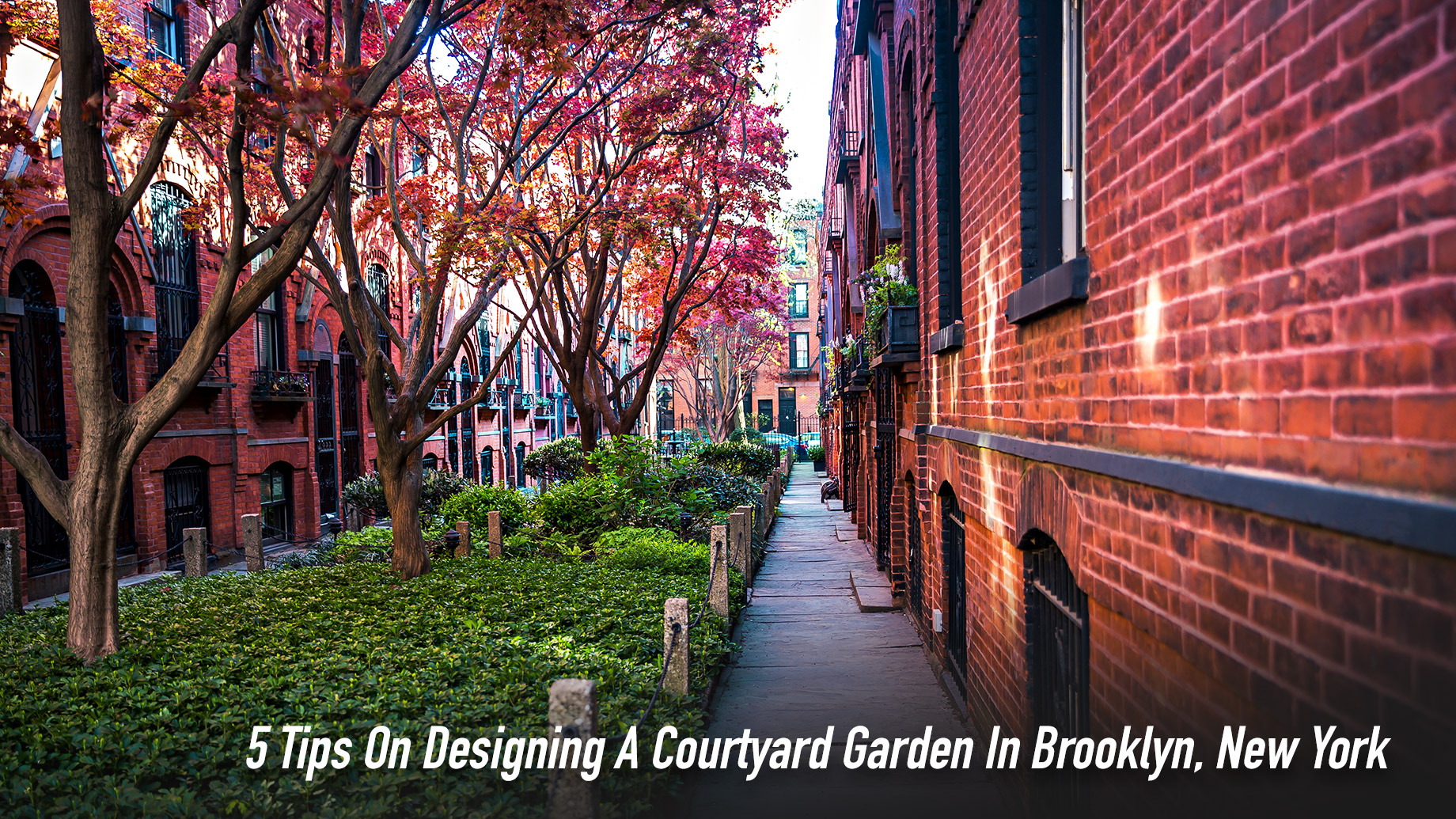
Although courtyard gardens are modest, they may be lovely places to rest and nurture plants. They’re frequently gloomy and overshadowed by nearby structures, but they’re also warm and protected, enabling you to cultivate a diverse selection of intriguing and more delicate plants.
While squeezing as many plants into a small space may be tempting, you must restrict the plant kinds and materials utilized to produce a clean, uncluttered effect.
Courtyard gardens are often smaller places with walls and neighbors. So, in small gardens, it’s important to create a quiet, calm ambiance while making the most of the area with furniture and plants without making it appear congested.
Because of their size and location, these gardens often serve as an extension of the home. Furthermore, because the entire area is often visible inside, having a beautiful garden is essential.
Below are some of the tips for making the best landscape design in Brooklyn:
1. Keep the garden design brief in mind
The customers had several nice ideas, such as elevated planting borders, seats, and a focal point illusion trellis at the end of the garden. It was refreshing to have part of the planning done ahead of time!
It is critical to consider the area’s function while creating anything. This patio will mostly be used as a cool spot for afternoon tea. Because it’s two flights of stairs down from the main living rooms, it won’t be utilized for eating very often.
2. Locate your center
The centerline is the line that runs through the middle of the garden; you only need to know this if you’re planning on building a symmetrical, formal arrangement. There were two center lines because of the layout of the courtyard and to maintain the center parallel to the house. A centerline from the rear of the garden and another from the middle of the front of the garden are drawn.
3. Simplicity is essential
When you’re first sketching out your garden design, make the shapes as simple as possible. First, simple forms make it simpler to assess how well you’ve utilized the available space and that everything is in proportion.
4. Add an overhead cover
Although courtyards are protected from the elements on all sides, if yours is overlooked, you may also want to consider patio cover options. Choose a flexible shelter that attaches up high, such as awnings or a streamlined design like this, to conserve valuable floor space. You’ll be able to open and close it according to your mood (and the weather).
From the wooden seat to the slick decking beneath the foot, we appreciate the mix of neutral-hued materials in this set-up. It creates a relaxing atmosphere in the room, especially when combined with the pastel-painted walls. All that’s required for a pop of color is an unusual potted plant and a properly picked accessory.
5. Finishing with precision
Before finalizing the design, double-check that everything is in place and the pathways are all the same width. Measure everything you’ve sketched to double-check. A few centimeters on the paper might be ten centimeters on the ground. It may go unnoticed on paper, but it will become apparent after the garden is completed.